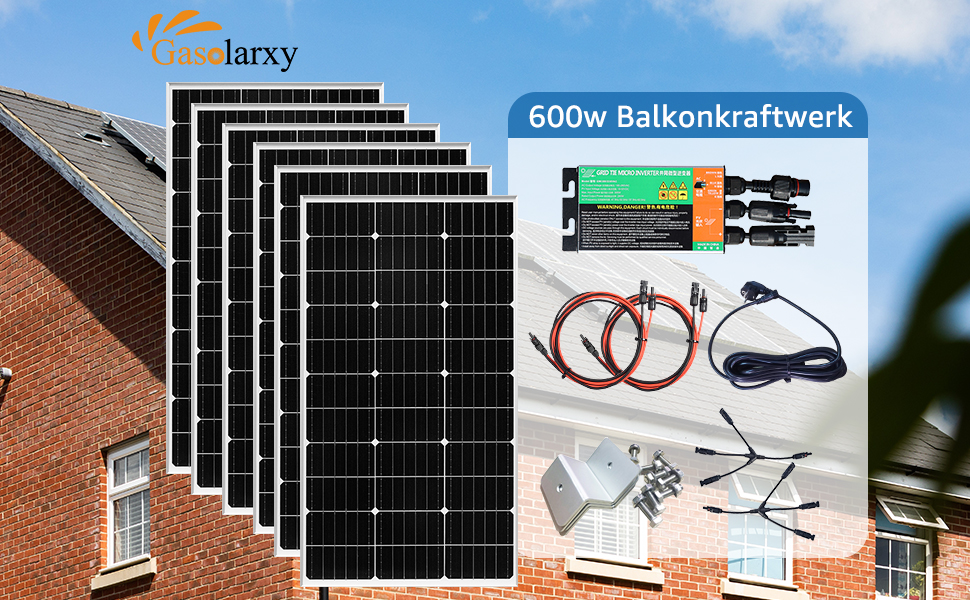How much electricity does a solar panel produce? How many panels do you need? Find out how to calculate solar production and your true energy needs. balkonkraftwerk 600w komplettset power is produced by photovoltaic panels that convert sunlight to electricity. The power that a solar panel can produce is based on its size and material, on its orientation to the sun and on the amount of sunlight it receives.
When a solar panel is manufactured, it is tested under Standard Test Conditions (STC) which are equivalent to full sun at sea level at 25 degrees Celsius. The panel is then rated for the number of watts it produces under those test conditions. For example, a typical solar panel for a home system might produce 200 Watts. Five of these panels would then produce 1000 Watt, or one kiloWatt. When the sun shines on the one kW array for one hour, it will have produced about one kWh of electricity. If you have the equivalent of six hours of full sun in a day the array will have produced six kWh. This is the amount of energy you now have available to operate your electrical appliances.
The number of kWh you can expect the solar array to produce in a typical day, month or year in your area depends on the amount of sunshine you receive. Days vary in length with the seasons. Some days are cloudy. On overcast days the panels will only produce about 20 – 60% of their full rating, depending on the thickness of the cloud cover. These variations are taken into account by using climate data that provides the average solar radiation per day throughout the year. Just multiply the solar radiation by the panel rating to determine how much energy you can expect.
The number of solar panels that you need depends on the amount of electricity that you use. Just like solar production, this is measured in kWh. If you are already connected to an electrical utility provider you will be able to find this information on the utility bill. Look for the kWh delivered between actual readings and calculate your monthly usage from the dates given.
If you are planning to use a standalone (off-grid) solar power system you will have to calculate the power you will need. Here is how it works. Multiply the power (in kWh) used by one of your appliances by the number of hours per day that you use it – this gives you the kWh for that appliance for one day. Do this for everything that uses electricity (including pumps and mechanical equipment) and add them all up. This will give you the total number of kWh per day. This calculation is called a load analysis.
Let’s say that you are using 400 kWh per month. If a one-kW solar array in your climate conditions would produce an average of about 100 kWh per month, you would need a four-kW array. Converting light to electricity is not 100% efficient – the direct current electricity produced by the panels must be converted to the alternating current used by household appliances. This is done by an inverter. Most inverters are about 90% efficient, so your solar array should be large enough to offset this 10% loss.
